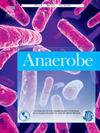Molecular clock complexities of Clostridioides difficile
IF 2.6
3区 生物学
Q3 MICROBIOLOGY
引用次数: 0
Abstract
Objectives
Reconstruct the phylogenetic status of a collection of historical Clostridioides difficile isolates and evaluate the congruence of their evolutionary trajectories with established molecular clock models.
Methods
Phylogenetic analysis was performed on Illumina sequence reads from previously analysed historic C. difficile isolates (1980–86; n = 75) demonstrating multiple antimicrobial resistances. Data was grouped by ribotype (RT), including comparators from European surveillance (2012–13) and phylogenetic studies (1985–2010). Reads were mapped to CD630/CD196 reference genomes and compared using recombination-adjusted maximum likelihood trees. Prediction intervals for expected SNP differences by age were calculated using a Poisson distribution and molecular clock estimates (0.74 SNPs per genome/per year). Root-to-tip analysis was performed to determine the date of most common recent ancestor of genomes sharing a ribotype.
Results
Moxifloxacin-resistant (>16 mg/L) RT027 isolate JV67 (1986) was two SNPs distinct from a 2006 genome, fewer than the expected lower estimate (4.4 SNPs) under current molecular clock calculations; (p = 3.93x10−5). For isolate JV02 (1981), the 13 SNP divergence from a 2008 isolate was consistent with expectations (5.9 SNPs; p = 0.07). JV73 (1983) demonstrated an 8 SNP difference, which although above the expected lower limit (5.5 SNPs), was outside the 95 % prediction interval; (p = 4.51x10−3). Only sixty-nine percent of historical genomes fit within the prediction interval for the number of SNPs expected compared to recent isolates, with fewer SNPs observed more frequently than expected. Root-to-tip analysis demonstrated a weak linear correlation.
Conclusions
C. difficile molecular clock estimations may be more complex than previously considered, with periods of spore quiescence potentially complicating analyses.
艰难梭菌的分子钟复杂性。
目的:重建历史上难辨梭菌分离株的系统发育状态,并评估其进化轨迹与已建立的分子钟模型的一致性。方法:对之前分析的历史难辨梭菌分离株(1980-86;N =75)显示多种抗菌素耐药性。数据按核糖型(RT)分组,包括来自欧洲监测(2012-13)和系统发育研究(1985-2010)的比较数据。将Reads映射到CD630/CD196参考基因组,并使用重组调整的最大似然树进行比较。使用泊松分布和分子钟估计(每个基因组/年0.74个SNP)计算年龄预期SNP差异的预测区间。进行了从根到尖的分析,以确定共享核糖型的基因组最常见的最近祖先的日期。结果:Moxifloxacin-resistant (>16 mg/L) RT027分离物JV67(1986)与2006年基因组有2个不同的snp,低于目前分子钟计算下预期的较低估计(4.4个snp);x10-5 (p = 3.93)。对于分离物JV02(1981), 13个SNP与2008年分离物的差异与预期一致(5.9个SNP;p = 0.07)。JV73(1983)显示了8个SNP的差异,虽然高于预期的下限(5.5个SNP),但超出了95%的预测区间;x10-3 (p = 4.51)。与最近的分离株相比,只有69%的历史基因组符合预期的snp数量的预测区间,观察到的snp较少,频率高于预期。根到尖的分析显示只有微弱的线性相关。结论:艰难梭菌分子钟估计可能比以前认为的更复杂,孢子静止期可能使分析复杂化。
本文章由计算机程序翻译,如有差异,请以英文原文为准。
求助全文
约1分钟内获得全文
求助全文
来源期刊

Anaerobe
生物-微生物学
CiteScore
5.20
自引率
8.70%
发文量
137
审稿时长
76 days
期刊介绍:
Anaerobe is essential reading for those who wish to remain at the forefront of discoveries relating to life processes of strictly anaerobes. The journal is multi-disciplinary, and provides a unique forum for those investigating anaerobic organisms that cause infections in humans and animals, as well as anaerobes that play roles in microbiomes or environmental processes.
Anaerobe publishes reviews, mini reviews, original research articles, notes and case reports. Relevant topics fall into the broad categories of anaerobes in human and animal diseases, anaerobes in the microbiome, anaerobes in the environment, diagnosis of anaerobes in clinical microbiology laboratories, molecular biology, genetics, pathogenesis, toxins and antibiotic susceptibility of anaerobic bacteria.
 求助内容:
求助内容: 应助结果提醒方式:
应助结果提醒方式:


